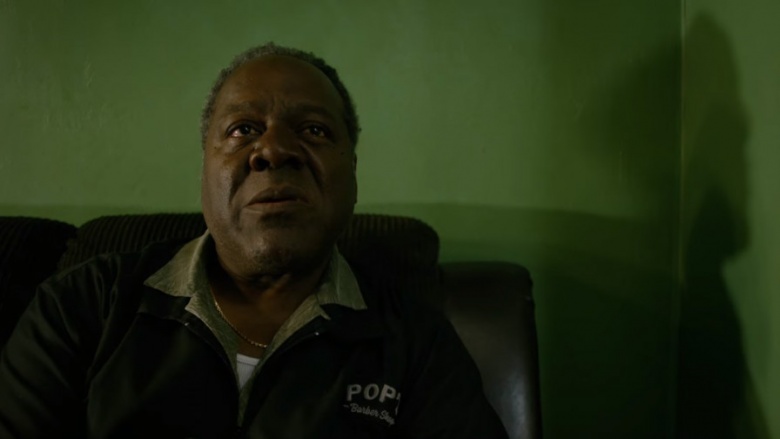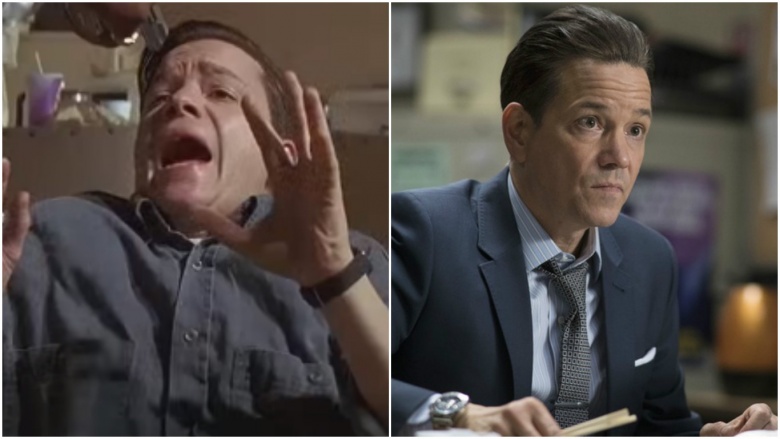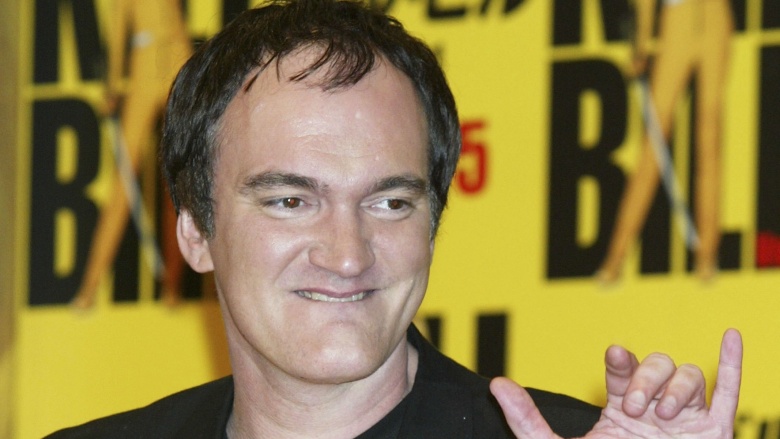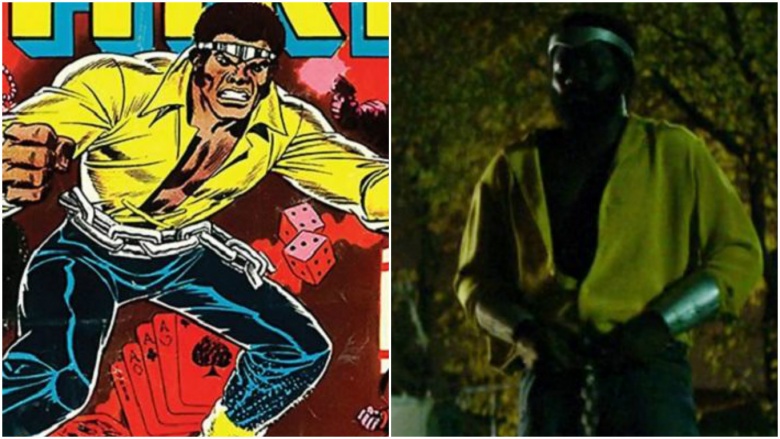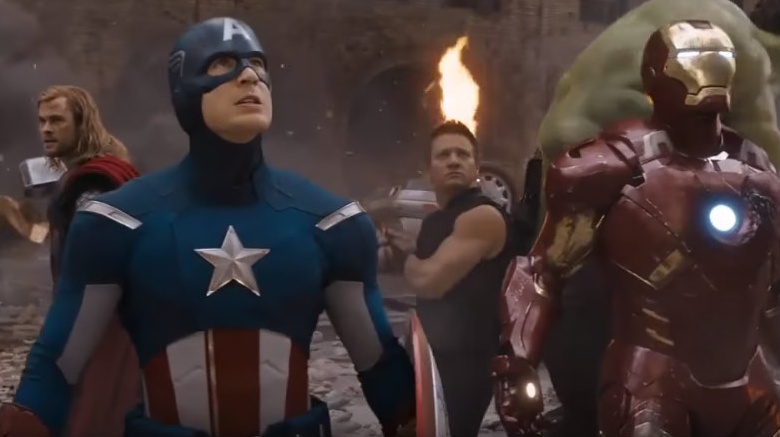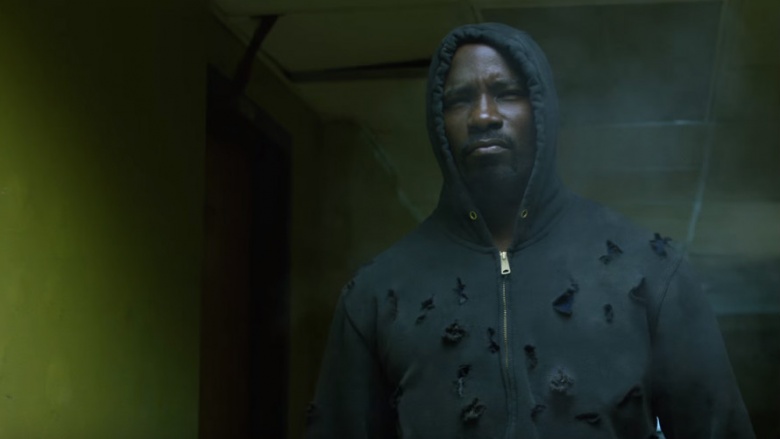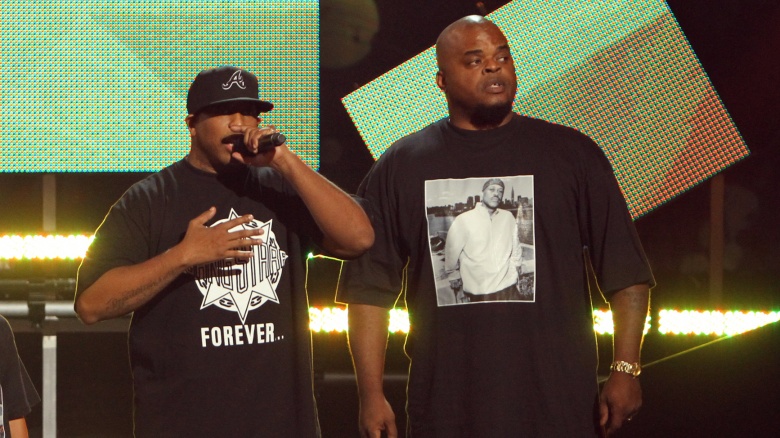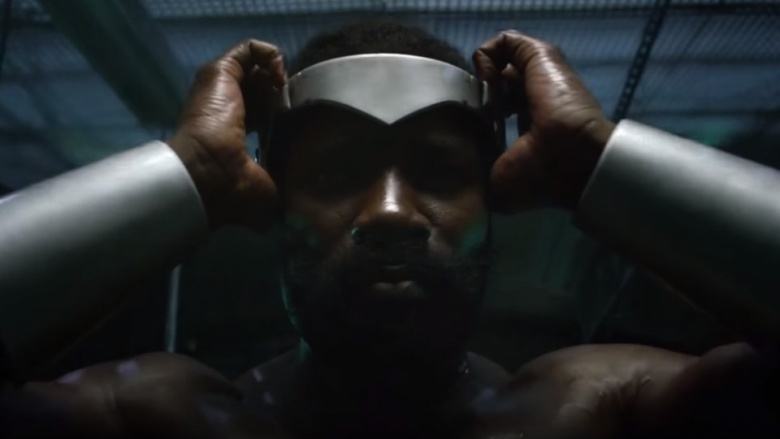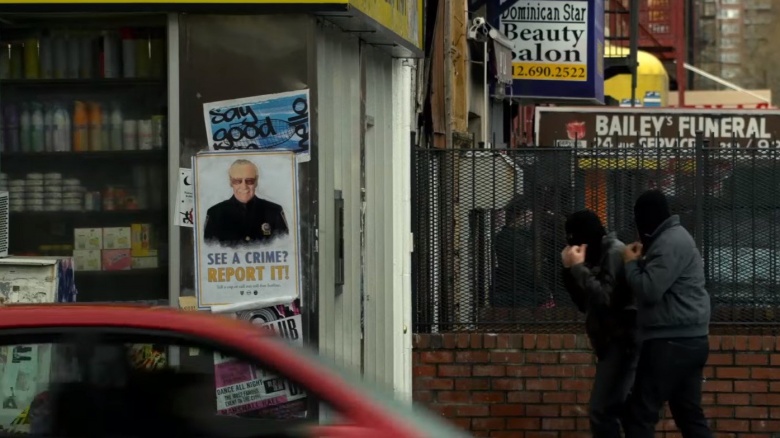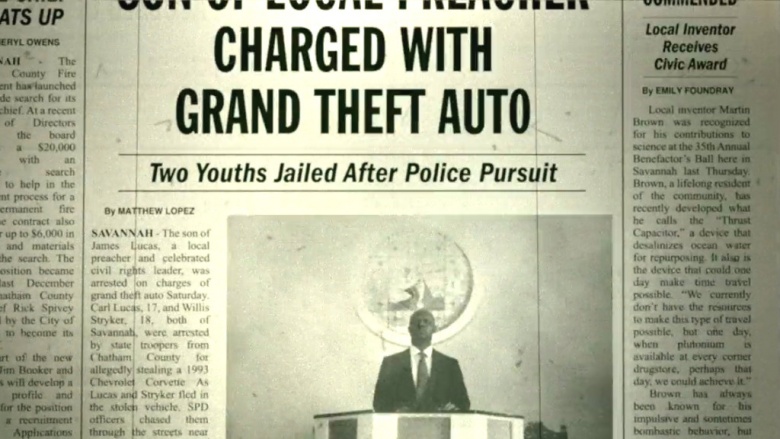Easter Eggs You Didn't Notice In Luke Cage
When news of the Netflix/Marvel collaboration Luke Cage was announced, the internet damn near broke itself. The show went on to garner one of the highest-viewed premieres in Netflix history, and it's already on its way to being crowned a modern superhero classic. True to their fans, the show's creators packed Luke Cage with references spanning the bulletproof hero's history, all the way back to his humble beginnings in 1972.
Didn't notice them? Don't worry—that's why we're here. Let's look at some of the Luke Cage Easter eggs you may have missed. Warning: Spoilers ahead.
Power Man
In the first episode of Luke Cage, an off-the-cuff joke by Pop Hunter seemed to foreshadow Luke Cage's powers, but it was actually a reference to Cage's comic book days. In the scene, Pop jokingly refers to Luke Cage as "Power Man." This is a reference to Cage's original alias in the comic series during the '70s.
While the show's Luke Cage shrugs off the nickname every time it's mentioned (and it pops up periodically throughout season one), in the comics, Luke Cage embraces it. The name of the comic series was eventually changed to "Power Man," and Cage seemed to revel in using the nickname to taunt his enemies. For example, in Power Man and Iron Fist #77, Cage famously shouted, "They don't call ol' Luke Cage 'Power Man' for nothin'!"
The Pulp Fiction connection
Near the end of the third episode, there's a scene in which Misty Knight (played by Simone Missick) angrily tells Detective Rafael Scarfe (played by Frank Whaley), "Damn it, you broke my concentration." The line is seen by a lot of people as a nod to Whaley's part in Pulp Fiction. In Pulp Fiction's epic "Say 'What' Again" scene, Samuel L. Jackson cuts off Whaley's character mid-sentence, shoots the guy on the couch, and then turns back to Whaley's character and says, "Oh, I'm sorry, did I break your concentration?"
It may seem like a stretch, until you realize that Quentin Tarantino tried to make a Luke Cage film in the early '90s before deciding to work on a different project instead. That project was, of course, Pulp Fiction. Considering Cage creator Cheo Hodari Coker's insane attention to detail, the reference was almost certainly intentional. And as we'll see, it wasn't the only nod to Tarantino he stuck in the show.
The Kill Bill soundtrack
The Pulp Fiction Easter egg isn't the only reference to the Tarantino filmography. Seen from the right angle, Cheo Hadari Coker's vision for Luke Cage plays like a love story to '70s culture in general, and Tarantino in particular. That's entirely understandable. The original Luke Cage comics arrived on the heels of the hottest blaxploitation films of that decade (think Shaft), and Tarantino seems to have a particular affinity for that era. Maybe even a man-crush, but we can't blame him. In addition to the Pulp Fiction references, Luke Cage's music draws heavily from a certain Tarantino musical cue.
You definitely heard it, whether you noticed or not: that jarring, siren-sounding loop that shrieks out over the action. You may have even wondered why it sounded so familiar. Basically, it's the same sound Tarantino used in Kill Bill. That lone sound boils the 1970s down into a thick syrup and drips the decade straight into your ears. In a long, winding way, it's a firm nod to the only era in modern history that could have spawned such an unlikely hero as Luke Cage.
The yellow shirt
Episode four was where we got to see how Luke Cage got his powers, and it featured a chuckle-worthy nod to his original comic book costume. Like other Marvel heroes who have made their way to Netflix, Cage's onscreen outfit is very different from the comics. On the show, he wears a t-shirt and a hoodie, but at the height of his success in the '70s, Cage could be seen fist-punching the baddies in a yellow, open-fronted blouse with metal wrist cuffs and a metal band across his forehead.
After escaping from prison in the Netflix show, Cage wanders around with the headband and the cuffs until he's able to snag some clothes off a clothesline. The shirt he grabs? A yellow blouse. He only wears it long enough to mutter "You look like a damn fool" once he catches his reflection in a car window. While the show's creators obviously wanted a more modern, down-to-earth look for their hero, we probably could have gotten used to the original costume. After all, Diamondback got a costume. Why should Luke Cage be stuck with a hoodie?
Bootleg DVDs
In the first episode of Luke Cage, there's a scene with a kid on the street trying to sell DVDs of "The Incident," a quick reference to the battle that destroyed New York in The Avengers. During his spiel, the kid gives us some colorful descriptions of the cinematic heroes. His bootleg DVDs feature "the old man with the shield," "the blond dude with the hammer," and "the big green monster," to name a few.
It's a cool callback to the events of The Avengers, but it also reinforces the idea that everything in the MTU and MCU is connected, and the events in one film can directly influence a seemingly unrelated storyline. We caught a few similar moments in Daredevil, first when Foggy mentions that they can only afford their office because of the same "Incident," and again later when it's suggested that Wilson Fisk is using the destruction of the city as a springboard in his campaign to rebuild Hell's Kitchen.
With the Luke Cage Easter egg, it's even easier to imagine that interconnected world where Luke Cage is huddling in a barbershop with Pop, hiding from falling rubble while the Avengers battle it out with the Chitauri in Manhattan.
Hammer time
Throughout the first season, there are a ton of references to a company called Hammer Tech. When Willis Stryker, or Diamondback, dons his green super suit at the end of the series, we learn it was designed by Hammer Tech to absorb Luke Cage's superhuman punches.
Hammer Tech is also the company behind the Judas bullets, which are the only projectiles that can penetrate Luke Cage's unbreakable skin. According to Diamondback, the bullets are made from "alien metal," which is theorized to have been recovered from the Chitauri vehicles that went down over New York City in The Avengers. So there's another Avengers connection, but the real Easter egg here is Justin Hammer, the CEO of Hammer Tech himself.
The only time we've ever seen Justin Hammer, of course, was in Iron Man 2, in which he was played by Sam Rockwell. At the end of that movie, Hammer was sent to Seagate Prison (where Luke Cage was also incarcerated), and that was the last anybody heard from him.
Or so it seemed. While Hammer's story is never revealed, it's obvious he's either out of prison now or still pulling the strings from behind bars.
Episode titles
While these Easter eggs aren't featured within the show's physical universe, they offer yet another glimpse into the culture behind the world of Luke Cage. Watching the show on Netflix, you get to see each episode's title before hitting play. Some seem like apt descriptions of the episode ("Moment of Truth," "Code of the Streets," "Step in the Arena) while others are frustratingly non-sequitur ("DWYCK," "You Know My Steez").
In reality, each episode title is the name of a song by Gang Starr, a hip-hop group that formed in the '80s. Cheo Hodari Coker is a massive fan of hip-hop and a former music journalist, and he decided to incorporate that into the show. In his efforts to bring about the "Wu-Tang-ification of the Marvel universe," he's relied heavily on those elements, and as a result, the show is peppered with references to '80s and '90s hip-hop. There may even be more hip-hop Easter eggs in Luke Cage than Marvel Easter eggs.
Harlem's Captain America
Another seemingly offhand line that harks back to the comics can be found in episode seven, after Luke Cage and Cottonmouth leave the church. While they're outside, Cottonmouth says, "You knock down a few doors, speak in a church, and now you Harlem's Captain America."
On the surface, it's just a reference to another Marvel hero. As we've seen, the creators haven't exactly been shy about making sure we all know Luke Cage exists in the same universe as the Avengers films. But there's a deeper connection there that most people miss. Technically, Luke Cage really is Harlem's Captain America—in the comics, Luke Cage's bulletproof skin was the result of experimentation with the same serum that gave Steve Rogers, a.k.a. Captain America, his abilities.
The Stan Lee cameo
Eagle-eyed Marvel fans know that you'll never waste your time looking for a Stan Lee cameo. He shows up in everything, from Sam Raimi's original Spider-Man trilogy to The Avengers to Agents of S.H.I.E.L.D. He even made an appearance in Marvel's Daredevil, although you'd be hard-pressed to spot it: Lee's Daredevil cameo was one of the few times he appeared in a photo instead of acting in the main production. His picture can be seen on the wall of a police station. In Jessica Jones, the same picture is present in the same police station. (Here it is, for anyone curious). And yes, his distinctively mustached face also got some screentime in Luke Cage.
Like that quick cameo in Daredevil, Luke Cage featured a picture of Stan Lee instead of the man himself, and it was another one of those blink-and-you'll-miss-it Easter eggs. In episode 12, there's a poster on the outside wall of a store that's about to be robbed. Look closely, and you'll see Officer Lee's smiling mug over the words "See a crime? Report it!" Perhaps it's another in-joke that it showed up during a scene in which Luke Cage did see a crime taking place...and decided not to report it.
Trish Talk
If you've watched Jessica Jones, you know Trish Walker, Jones' foster sister and confidant and the host of a radio show called "Trish Talk." She knows Luke from his appearances on Jessica Jones, but most people missed her cameo in Cage's show.
At the beginning of episode six, there's a radio on in the background. Upon a casual listen, it's just playing a talk show doing a local opinion piece on Cage, with locals calling in to voice their personal views on this new guy tearing up their streets. But if you listen closely, you'll realize that it's not just any talk show—it's none other than "Trish Talk," with Trish Walker fielding the calls.
Martin Brown's thrust capacitor
This little Easter egg was so quick that it probably would have gone completely unnoticed if not for the good folks over at Reddit. It's only on the screen for an instant during the episode 10 scene in which Misty Knight combs the microfiche records in the newspaper archives.
As she scrolls through the headlines, one little sidebar column pops up that mentions an award ceremony for a local inventor named Martin Brown. The occasion? Apparently, this Brown fellow built a device called a "Thrust Capacitor" that could "someday make time travel possible." The article goes on to mention that Doc Brown was involved in a 1985 experiment with a local high school boy named Mac Fly. The details were close enough for someone to make the immediate connection to the 1985 Michael J. Fox film Back to the Future, even though in the movie it's called a "flux capacitor," Doc's first name is Emmett, and Marty McFly's name is spelled differently.
There doesn't seem to be any purpose to this quick reference, but regardless, it's pretty awesome. Maybe one of the prop guys just loved the film. Sweet Christmas and Great Scott!

